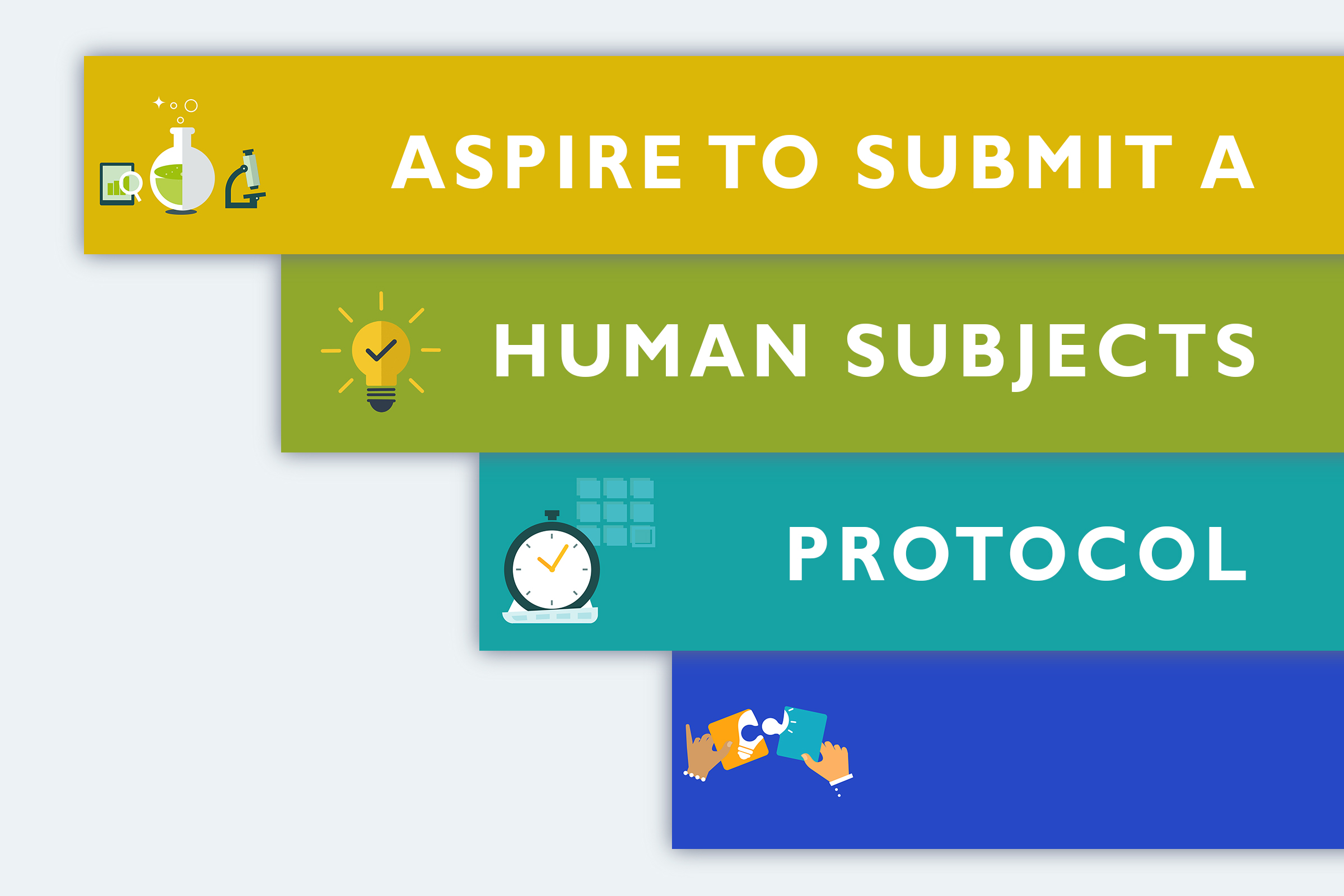New researchers may hesitate before creating an Institutional Review Board (IRB) protocol because they are concerned about submitting their study with human subjects to a rigorous and comprehensive review process. To decrease the hesitation new researchers may feel, TC IRB has created numerous resources, including a What is Human Subjects Research? introductory guide, Before You Begin and How to Submit pages, a description of the Life Cycle of a Protocol, multiple Guides & Resources, descriptions of the IRB Review Categories, a reference for TC Reviewer Questions, and submission walk-through guides (e.g., How to Submit a New Protocol).
Researchers can also contact the IRB office directly at (212) 678-4105 or by emailing IRB@tc.edu with research concerns not answered on the website. Researchers affiliated with TC may also use the “messages” function in TC Mentor IRB; this function is helpful for speaking with an IRB reviewer about a specific protocol (How to Access Messages in TC Mentor IRB). Before you contact the IRB directly, please take the time to review the FAQs section on our website and the TC IRB Submission Document Templates & Samples guide.
Researchers should feel empowered to submit an IRB protocol for review because the IRB protocol submission is systematic, comprehensive, all (mostly) possible, and an intellectual exchange.
- Systematic. Just like stops on a train line, the IRB protocol submission process is systematic. Prior to submitting an IRB protocol for review, researchers should visit the Training & Certification page for details on how to get required training to conduct human subject research. To submit an IRB protocol, you should systematically organize your content for IRB reviewers and your population of interest. You can review the Writing for an IRB Review page as a guide. Prior to submission, read the instructions of an IRB protocol carefully, review templates, and check examples. Generally, doctoral student research will follow this pattern:
- Complete CITI Training (Training & Certification)
- Secure Faculty Sponsor (The Importance of a Faculty Sponsor for Student Researchers)
- Preparation - Develop research questions, methodology, instruments, consent procedures, etc. (Notes on Recruitment Materials)
- Dissertation Proposal Hearing
- IRB Protocol Submission (How to Submit)
- IRB Approval or Revisions (review Request for Revisions Memo Template)
- Human Subjects Research May Begin (after IRB approval)
- Data collection begins and data is securely managed (Data Sharing, Requests, & Encryption)
- Update the IRB about protocol changes (Modification, Continuing Review, Terminating a Protocol) and keep the IRB informed about any Protocol Deviations and Adverse Events.
- Comprehensive. Just like managing any important task, IRB protocols are comprehensive and take time to complete. As such, start thinking about your research early. Start by constructing your research plan. Consider the risk-level of your study (Does my human subjects research fall under the expedited review category?). Are participants experiencing minimal risk? If they will be exposed to more than minimal risk, how will you reduce the chance of harm? What should you include in your materials—a recruitment script, an informed consent, parental permission form, or student assent form? (Visit our TC IRB Submission Document Templates & Samples for detailed information.) Have you thought through the parameters of your research plan including implementation, data storage, and digital data security (e.g.,Data Security Plan)? Is your faculty sponsor aware of your recent research plans? The IRB will review your protocol submission and offer feedback to ensure you are protecting your research participants.
- All (mostly) possible. Just like checking a box on a to-do list, your research plan is possible (with some justifications, negotiations, explanations, and compromises). When preparing your IRB protocol, remember that the IRB board is composed of experts who have a wealth of information and experience in research design, implementation, and research ethics and regulations. Collectively, they consider the parameters of your proposed work and how you are presenting it to ensure participants are informed and protected. Based on their knowledge, they will make recommendations that can further ensure you protect participants and follow compliance procedures. Researchers may also be interested in reading TC IRB’s Standard Operating Procedures.
- An intellectual exchange. Just like putting puzzle pieces together, the IRB and researchers engage in an intellectual exchange. IRB members will offer you feedback that supports compliance and ethical conduct to ensure your work best fits federal and institutional parameters. Researchers can review the FAQs section on the website or read other articles on the IRB Blog for more information on what reviewers expect in a protocol submission.
The IRB office and IRB Board are comprised of skilled and mindful professionals who are committed to producing good research towards the betterment of all peoples. Developing an IRB protocol is a collaborative process dedicated to the maturation and refinement of the research.


